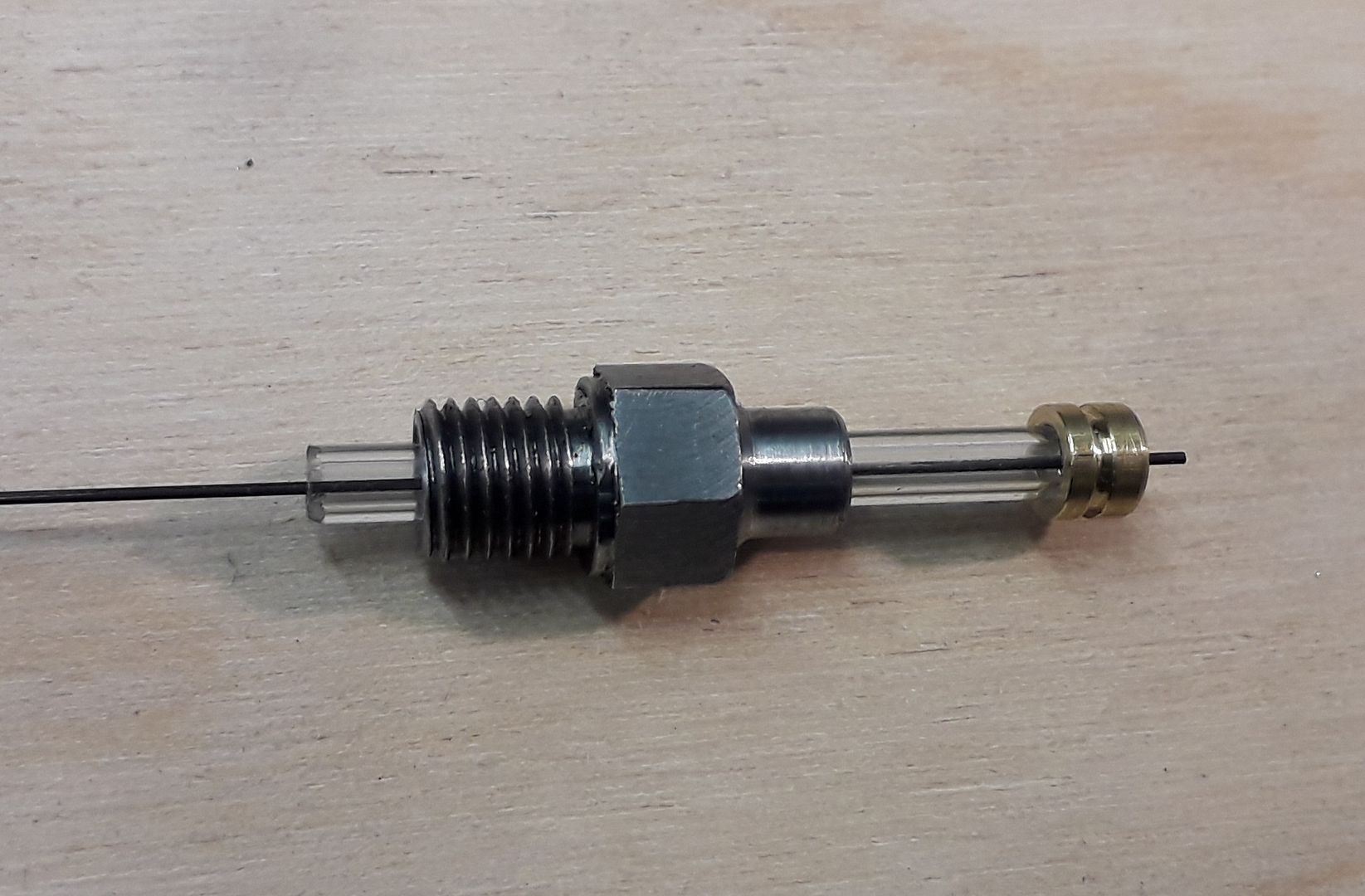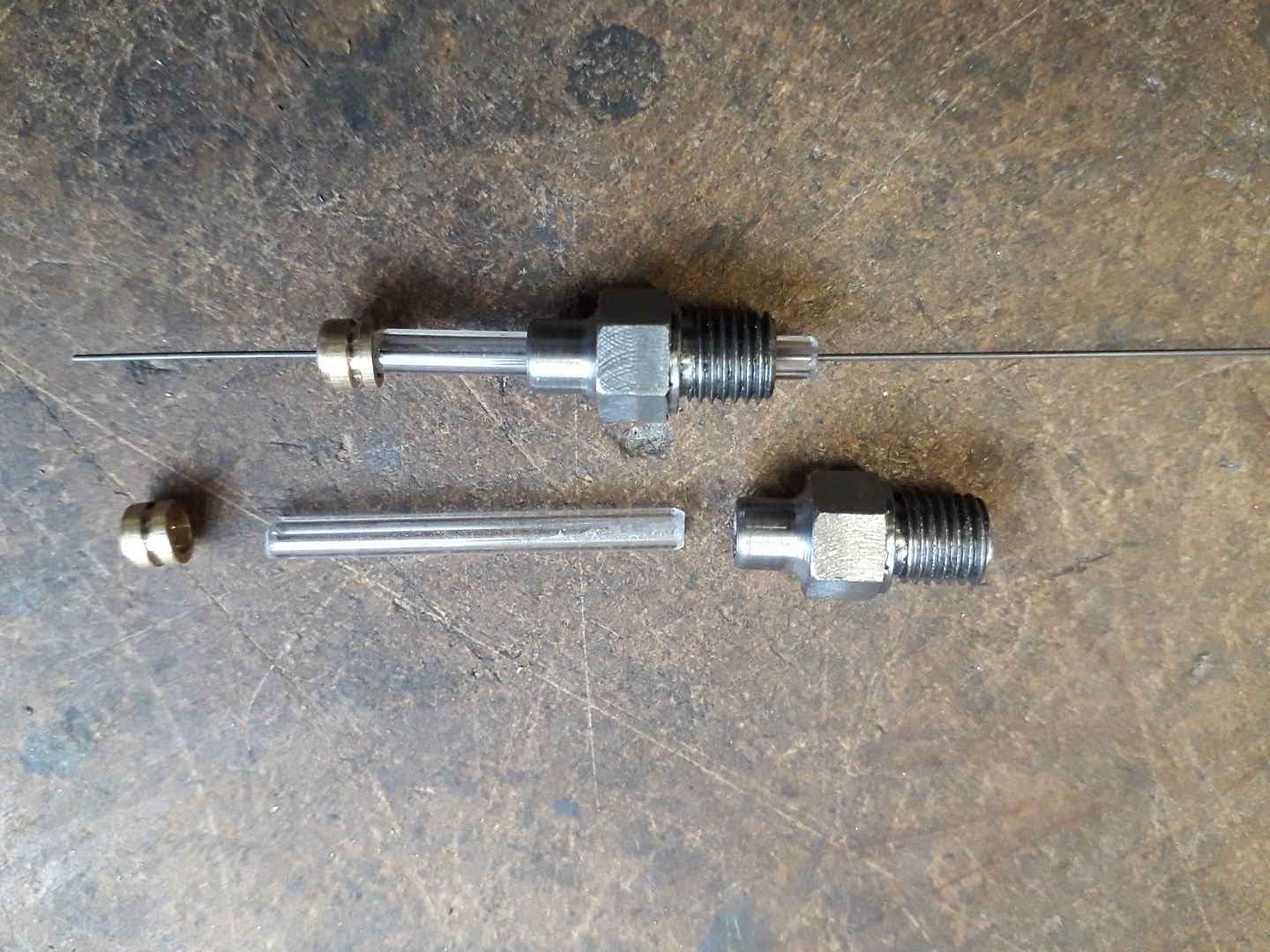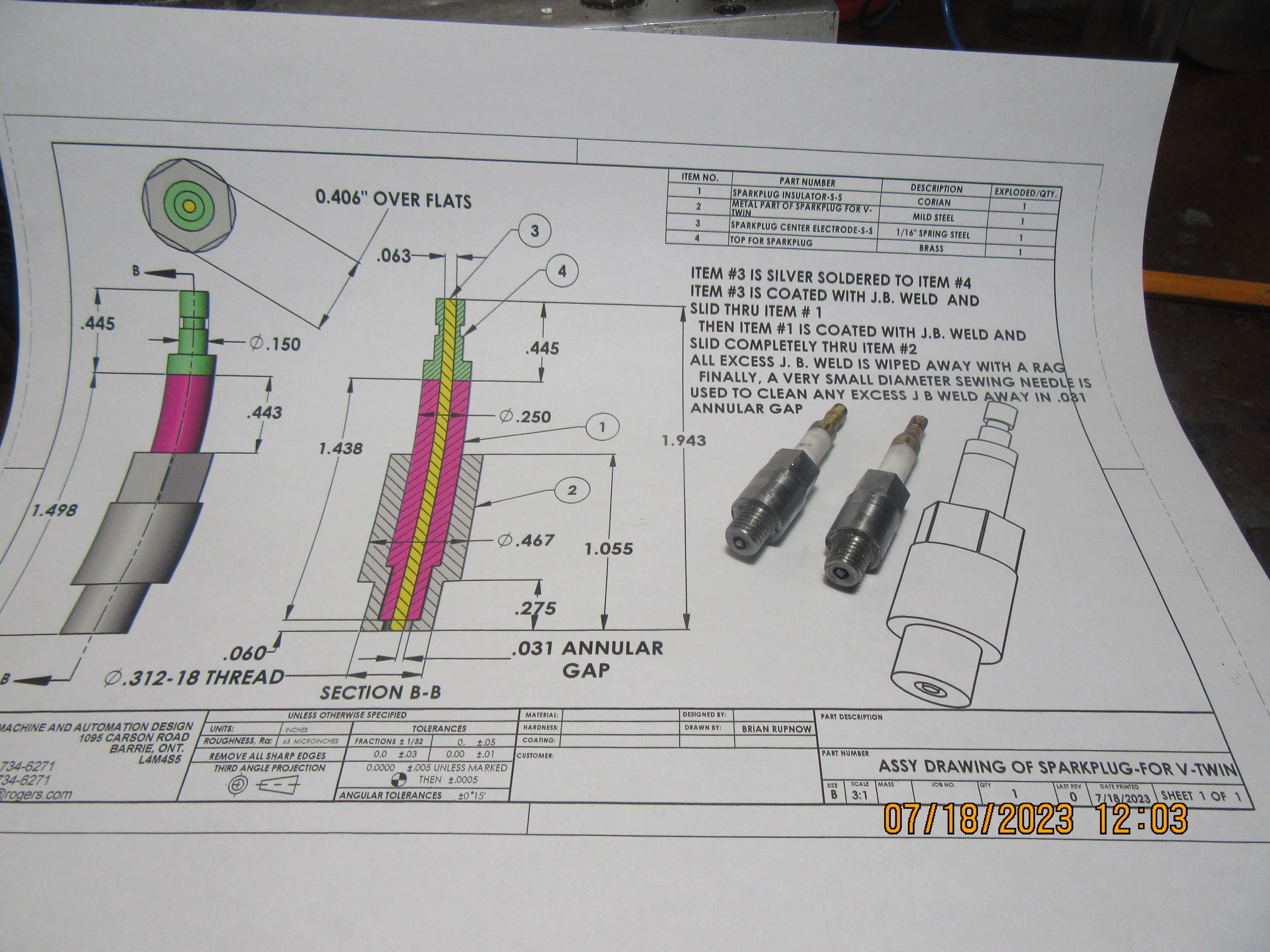Something to keep in mind with a points-type or simple transistor ignition is that energy is being built in the coil during dwell - that's the time the points are closed or the transistor is ON. In a multi-cylinder engine the dwell is necessarily limited to tens of crankshaft degrees since the coil has to service other plugs. The resistance in series with the coil is often minimized in order to get enough current through the coil to build enough energy in the time allotted for each plug.
In a single or dual cylinder engine, the dwell is huge. The points spend most of their time closed, and if an automotive coil with insufficient series resistance is being used, the energy built is much more than needed in a model engine. When the points open, and all this energy is dumped into a single cylinder model engine plug, you're going to greatly shorten the life of the plug. If you also run a really wide plug gap, that excess energy will show up as some terrifically high voltages during compression that can result in a rash of arc-over problems that a typical plug isn't designed to handle. (i.e. it doesn't have a 3 inch long insulator).



















![DreamPlan Home Design and Landscaping Software Free for Windows [PC Download]](https://m.media-amazon.com/images/I/51kvZH2dVLL._SL500_.jpg)








































![Learning AutoCAD Civil 3D 2014 [Online Code]](https://m.media-amazon.com/images/I/51F3yi9fokL._SL500_.jpg)





